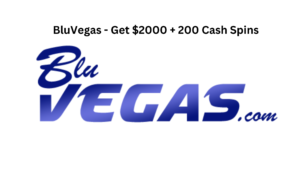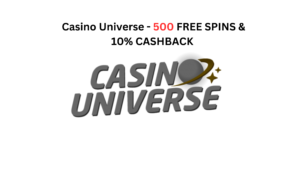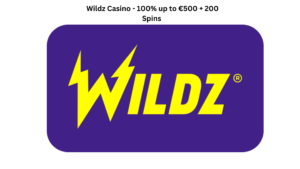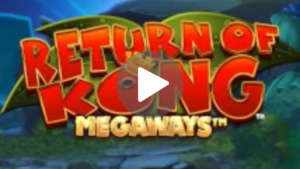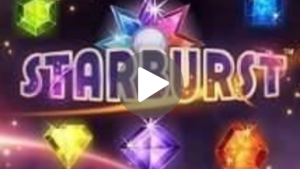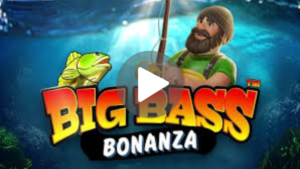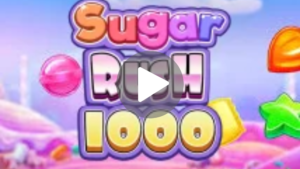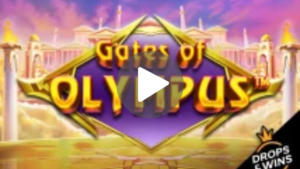Wish to anticipate performs, make sooner selections, and keep one step forward of opponents? Creating situational consciousness is the important thing. Right here’s how.
Situational Consciousness: Studying the Ice for Higher Determination-Making
By Jordan Fuller
On the subject of hockey, the distinction between good and nice isn’t really present in a participant’s shot energy or skating pace. It’s what occurs between your ears!
The invisible ability separating the professionals from amateurs is situational consciousness—the cognitive framework that maps ice actions into readable patterns, potential threats, and alternatives.
Right here’s why probably the most harmful gamers on the ice aren’t all the time the quickest or strongest. It’s those who see developments three strikes forward. This text will make it easier to decide up some methods for growing your personal situational consciousness, construct psychological toughness, and check this idea for your self.
Why Situational Consciousness Adjustments How You Play
Situational consciousness helps you see threats and alternatives earlier than they occur, so you’ll be able to act early as a substitute of react late. By monitoring puck motion, participant spacing, and play improvement in actual time, you’ll be able to anticipate turnovers, intercept passes, and create odd-man rushes sooner than your opponents anticipate. That is how video games are received.
These split-second reads immediately form the choices you make underneath stress. Sturdy consciousness helps you expect your opponent’s motion and make the correct strikes, select between passing and carrying, or decide the right response based mostly on spacing and the way the sport is flowing.
The Final Ice Hockey Coach
How Situational Consciousness Works Throughout a Sport
Situational consciousness helps you learn the ice earlier than the puck involves you, providing you with a head begin in figuring out threats, open passing choices, and taking pictures lanes. With this in thoughts, you’ll be able to act with goal as a substitute of hesitation. Entering into the behavior of being conscious of your environment on the ice eases panic underneath stress and will increase your odds of constructing clear, efficient performs.
At its core, consciousness breaks down into three cognitive steps:
Notion Comprehension Projection
Notion is the preliminary visible scan, recognizing puck motion, stick positions, and participant spacing. Comprehension turns these inputs into that means, like recognizing a defensive collapse or an uncovered winger. Projection makes use of that evaluation to foretell what is going to most certainly occur subsequent, which helps you select whether or not to cross, carry, or maintain for a greater angle.
When any a part of this course of breaks down, it results in missed breakout choices, pressured turnovers, or blown protection within the D zone. Even minor lapses in consciousness can shift the momentum and value your crew an opportunity to attain.
Hockey Sense vs Hockey IQ
Hockey Sense and Hockey IQ are various kinds of in-game pondering. Hockey sense refers to instinctive, real-time selections made throughout the chaos of gameplay, like studying physique language, anticipating passes, or leaping into house with out verbal cues. It’s about reacting within the second, utilizing sample recognition and muscle reminiscence.
Hockey IQ is extra structured and strategic. It consists of ideas like controlling the center, studying help layers, managing the puck in high-risk zones, and adjusting techniques based mostly in your crew’s techniques. Whereas sense is fast and reactive, IQ is reflective and positional.
Elite gamers use each expertise collectively to remain one step forward. For instance, a defender would possibly step as much as intercept a cross (hockey sense) and know when to retreat based mostly on line matchups and time left on the clock (hockey IQ). Coaching your self in each builds anticipation, helps fluid decision-making, and means that you can alter in actual time as sport situations evolve.
Head Checking and Ice Studying for Quicker Determination-Making
Head checking, or “heads up hockey,” and ice studying enhance your determination pace on the ice by providing you with fixed spatial updates earlier than and after you make contact with the puck.
These fast, repeated head turns allow you to construct a psychological map of stress, teammates, and lane availability, which shortens your response time and sharpens your execution. For those who by no means learn to scan and skim what’s occurring on the ice, you’re pressured to react blindly and sometimes underneath stress, which is a street to rushed or poor selections.
Every place makes use of head checks otherwise based mostly on its function within the play. For instance:
Protection gamers scan behind them to trace forecheckers and monitor stress from a number of angles earlier than retrieving the puck. Wingers give attention to breakout lanes and neutral-zone spacing to arrange for stretch passes or transitions. Facilities, who typically function retailers and hyperlink each zones, should scan either side always to regulate the move and preserve puck help.
Efficient ice studying is tied on to how typically and the way early gamers scan. Gamers who carry out head checks earlier than receiving a cross are more likely to finish correct passes and make higher defensive reads. These small actions offer you simply sufficient time to decide on the correct choice underneath stress and keep away from pressured performs.
How Communication Boosts Situational Consciousness
Verbal communication sharpens situational consciousness by permitting teammates to share real-time data that the eyes would possibly miss. Cues like “wheel” (making a round movement along with your hand); “reverse” (gesturing over your shoulder); or “time” (tapping your wrist) alert gamers to stress, accessible lanes, or help choices with out requiring a head examine. These fast calls cut back hesitation and permit sooner, extra assured decision-making.
Constant communication helps align participant responses and stop defensive breakdowns. When everybody is aware of what their teammates are seeing and planning, they will alter their positioning and timing accordingly. This coordination helps cleaner zone exits, tighter protection, and fewer gaps in help.
Elite groups take this additional by constructing structured communication patterns into techniques play. For instance, defensemen would possibly name “internet entrance” to point protection assignments, or wingers use particular cues to set off set breakout routes. These habits flip verbal communication into an extension of the system, not only a response to chaos.
Constructing Group-Large Consciousness
Group-wide consciousness is determined by each participant sharing data and studying the sport collectively. Coordinated calls assist the group react sooner, particularly throughout transitions and stress. When everybody speaks the identical language, selections occur on the identical pace throughout the ice.
Belief additionally performs a key function in how successfully data is used. Gamers who belief their teammates’ reads will act on calls with out second-guessing. That shared understanding turns particular person consciousness right into a team-wide benefit.
Coaches reinforce this with system-based drills that require verbal execution underneath stress. For instance, drills could solely permit a breakout if three particular calls are made, or gamers should rotate based mostly on what their teammate calls out mid-play. These buildings develop synchronized pondering and assist groups handle house and stress as a unit.
Studying Opponent Formations and Anticipating Motion
Studying your opponent’s formations generally is a useful device that helps you expect the place stress will come from and the place passing lanes will open. Recognizing techniques just like the 1-2-2 or 2-1-2 forecheck means you’ll be able to anticipate which areas of the ice will tighten and which is able to stay accessible.
Defenders depend on spacing cues to handle puck help and preserve efficient hole management. When opponents overload one facet or collapse into the slot, defenders alter their positioning to remain between the puck and the web whereas defending weak-side threats. Studying stick angles, skating path, and protection gaps helps defenders time challenges and intercept passes.
Anticipating motion reduces response time and improves decision-making in all zones. When you’ll be able to learn the following cross or predict a lower to the web, you not want to attend for the play to occur—you’re already appearing on it. This psychological edge allows you to step into passing lanes, change coverages seamlessly, or shut house earlier than the opponent good points management.
Adapting to Ice Surfaces and Defensive Stress
Situational consciousness consists of adjusting to bodily ice circumstances and the way completely different defenders apply stress. Scan for irregularities like gentle spots, energetic boards, or lifeless zones that may change the place the puck goes throughout passes or rebounds. These sorts of micro-adjustments permit for cleaner zone exits, extra correct passes, and higher timing on dump-ins or rebounds.
Fast recognition of defensive stress performs a task in your puck-handling selections in actual time. Try to be monitoring how briskly opponents shut house and alter your response—whether or not to launch a cross instantly, defend the puck along with your physique, carry it into open ice—or maintain for help. Studying stress pace is particularly necessary alongside the boards or the blue line, the place house collapses shortly.
Rink dimensions additionally affect how gamers handle house and make tactical selections. NHL-sized ice forces tighter, sooner performs as a result of decreased width, whereas Olympic-sized rinks provide extra time however demand longer reads and higher spacing. You’ll must account for a way these structural variations compress or stretch offensive alternatives and defensive gaps.
Sport-State Consciousness
Sport-state consciousness helps you make extra clever selections based mostly on timing, rating, and particular crew conditions. For those who’re defending a one-goal lead within the ultimate minutes, you’ll handle the puck otherwise than should you’re actively chasing a purpose to tie, for instance. Recognizing the context, whether or not an influence play, penalty kill, or empty-net state of affairs, will information your threat ranges and positioning.
You additionally want to regulate to dynamic sport adjustments throughout play, like damaged sticks or late-game faceoffs. These unpredictable moments drive you to rethink your function and response. For instance, a defender and not using a stick should depend on teammates to stress the puck, whereas others shift protection to shut the uncovered lane.
This sort of adaptive pondering is a defining trait of elite hockey intelligence. Managing threat based mostly on time remaining, puck location, and momentum move requires sharp consciousness and calm decision-making underneath stress. Hockey coaches reinforce these habits via end-game-scenario drills and structured video breakdowns.
Situational Triggers That Affect Choices
Situational triggers affect how gamers consider threat and select actions in actual time. These embrace the place a turnover happens, whether or not there’s a contested free puck, how a lot time is left, and what the rating is. Every issue adjustments the urgency, spacing, and stage of management wanted for the following transfer.
You’ll end up always adjusting your determination making based mostly on these variables. For instance, chasing a tying purpose with two minutes left requires extra aggressive pinches and cross-ice makes an attempt, whereas defending a lead requires secure clears and tight help. These shifts in threat tolerance aren’t random; they observe the move and stress of the sport.
Situation-based drills assist prepare gamers to acknowledge and react to those triggers. By operating game-specific setups, like defending after a defensive-zone turnover or transitioning from a neutral-zone battle, gamers construct habits that match their response to the second. Over time, this coaching improves not simply execution however timing and determination pace underneath stress.
Coaching Situational Consciousness Off-Ice
Situational consciousness may be educated off the ice utilizing cognitive instruments, visualization, and centered remark. These strategies enhance recognition pace, decision-making underneath stress, and the flexibility to learn play improvement even with out bodily reps. Off-ice coaching helps sooner reactions on the ice by constructing psychological habits upfront.
Cognitive platforms like Hockey IntelliGym and VR-based simulations create real looking sport situations that sharpen notion and response timing. These instruments problem you to scan, consider choices, and reply underneath time stress, mimicking the pace and complexity of reside play. Common use helps you be taught to handle a number of variables without delay and make cleaner reads in high-stakes moments.
Psychological-mapping workouts additional reinforce spatial reminiscence and structured consciousness. By visualizing an offensive zone setup or imagining a neutral-zone regroup, you’ll be able to create inner “playbooks” which you could entry throughout video games. This improves timing, anticipation, and puck-support selections.
Watching NHL video games with a centered lens strengthens sample recognition. Monitoring a single habits, like how the professionals cowl a backcheck or reply to a turnover, helps you isolate cues and apply these reads in your personal video games. Over time, this centered viewing improves tactical consciousness and response accuracy.
On-Ice Drills to Enhance Determination-Making
On-ice drills develop decision-making by forcing gamers to learn, react, and adapt underneath real-time stress. In contrast to remoted ability work, these setups simulate sport circumstances the place gamers should course of a number of variables shortly. The purpose isn’t just execution, however making the correct alternative underneath time and house constraints.
Small-area video games are one of the efficient instruments for constructing situational consciousness. These drills shrink the taking part in house and create fixed stress, forcing gamers to scan sooner, talk extra clearly, and act decisively.
With much less time and fewer passing lanes, gamers be taught to course of motion patterns and help choices with out hesitation. Steady 2v1 and 3v2 drills simulate the choice factors in rush performs and odd-man conditions.
These repetitions assist gamers acknowledge defensive protection, exploit gaps, and resolve when to cross, shoot, or delay. As a result of these drills reset instantly with new attackers, gamers should get well, reassess, and repeat underneath fatigue.
Constraint-based drills push gamers to sharpen their reactions by eradicating consolation zones. Limiting puck touches, requiring motion via tight lanes, or forcing one-touch passes will increase cognitive load and response time. These constraints expose decision-making habits and encourage sooner reads in unpredictable situations.
Conclusion
Gamers who grasp situational consciousness are mechanically a step forward of others, orchestrating performs earlier than others even acknowledge the chance. This cognitive ability transcends pure expertise. By systematically growing your notion, comprehension, and projection skills, you’ll end up making selections that seem instinctive however are literally the product of educated consciousness and sample recognition.
In contrast to bodily attributes that peak and decline, situational consciousness continues growing all through your hockey profession. Your skill to learn the ice earlier than others turns into an enormous benefit—the distinction between chasing the sport and controlling it. Taking the time to be taught is the most effective present you can provide your self. Prepare to show chaos into alternative via the facility of situational consciousness.
Jordan Fuller is a retired golfer and businessman. When he’s not on the course engaged on his personal sport or mentoring younger golfers, he writes in-depth articles for his web site, Golf Affect.
CrossIceHockey.com is reader supported. If you purchase by way of the hyperlinks on our web site, we could earn an affiliate fee at no further price to you. Be taught extra.

